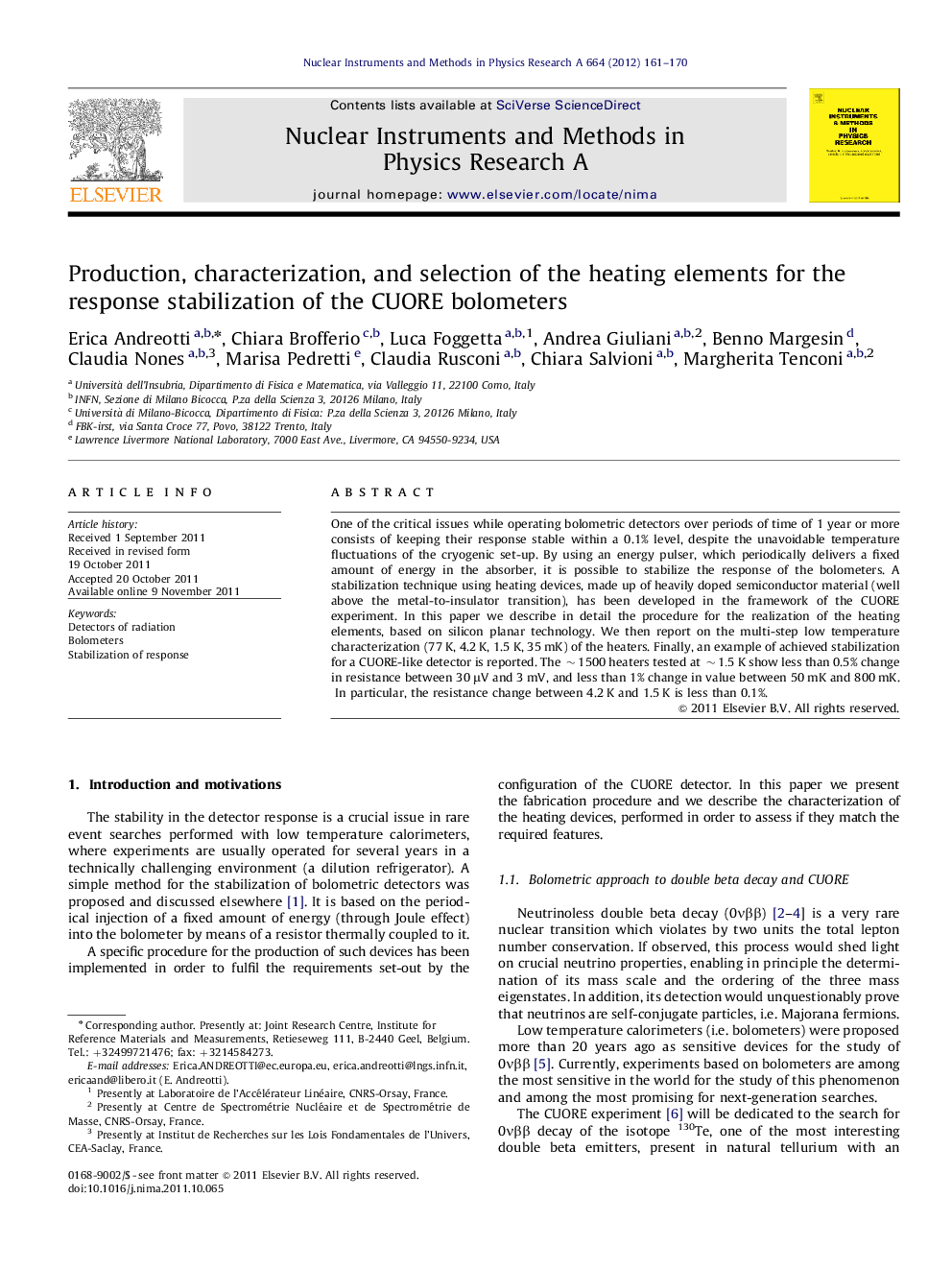| Article ID | Journal | Published Year | Pages | File Type |
|---|---|---|---|---|
| 1824442 | Nuclear Instruments and Methods in Physics Research Section A: Accelerators, Spectrometers, Detectors and Associated Equipment | 2012 | 10 Pages |
One of the critical issues while operating bolometric detectors over periods of time of 1 year or more consists of keeping their response stable within a 0.1% level, despite the unavoidable temperature fluctuations of the cryogenic set-up. By using an energy pulser, which periodically delivers a fixed amount of energy in the absorber, it is possible to stabilize the response of the bolometers. A stabilization technique using heating devices, made up of heavily doped semiconductor material (well above the metal-to-insulator transition), has been developed in the framework of the CUORE experiment. In this paper we describe in detail the procedure for the realization of the heating elements, based on silicon planar technology. We then report on the multi-step low temperature characterization (77 K, 4.2 K, 1.5 K, 35 mK) of the heaters. Finally, an example of achieved stabilization for a CUORE-like detector is reported. The ∼1500∼1500 heaters tested at ∼1.5K show less than 0.5% change in resistance between 30μV and 3 mV, and less than 1% change in value between 50 mK and 800 mK. In particular, the resistance change between 4.2 K and 1.5 K is less than 0.1%.
► Heating elements will be used for the stabilization of the CUORE bolometers. ► Their production is based on silicon planar technology. ► We performed a multi-step low temperature characterization (from 77 K to 20 mK) of a large sample of these devices. ► We tested them as stabilizers for a CUORE-like detector. ► The characterization ensured that a heaters based stabilization will be successful.
